Sectors
Insurance
AI solutions can help insurance companies improve their operations, increase efficiency, and better serve their customers. Some examples of how AI can be used in the insurance sector include:
- Fraud detection: AI systems can analyze insurance claims and detect suspicious activity, helping insurance companies prevent fraud and reduce the risk of financial losses.
- Risk assessment: AI systems can analyze large amounts of data to predict and assess the risk of potential claims, helping insurance companies make more informed decisions and minimize the impact of potential losses.
- Underwriting: AI systems can analyze large amounts of data such as medical records, driving records and social media profiles, to assess the risk of insuring an individual or a business, helping insurance companies make more accurate decisions.
- Customer service: AI chatbots and virtual assistants can help insurance companies provide 24/7 customer support, answering questions, and providing information on products and services.
- Claim processing: AI systems can automate the process of claim processing, by analyzing the provided data and documents, validating them and processing the claim accordingly, helping insurance companies to reduce the time and cost of claim processing.

Finance
AI solutions can help financial institutions make faster, more accurate decisions with less risk. Some examples of how AI can be used in the finance sector include:
- Fraud detection: AI systems can analyze financial transactions and identify suspicious activity in real-time, helping financial institutions detect and prevent fraud, reducing the risk of financial losses.
- Risk management: AI systems can analyze large amounts of financial data and identify potential risks before they materialize, helping financial institutions make more informed decisions and minimize the impact of potential losses.
- Trading: AI trading algorithms can analyze large amounts of data and execute trades faster and more accurately than humans, helping financial institutions increase profits and minimize losses.
- Credit Scoring: AI systems can analyze large amounts of data such as financial records, social media data and personal information, to predict the creditworthiness of an individual or a business, helping financial institutions make more accurate decisions.
- Customer service: AI chatbots and virtual assistants can help financial institutions provide 24/7 customer support, answering questions, and providing information on products and services.

Retail
AI solutions can help retailers improve customer engagement, increase sales and optimize inventory management. Some examples of how AI can be used in the retail sector include:
- Personalized product recommendations: AI systems can analyze customer browsing and purchase history to suggest relevant products that they may be interested in, increasing sales and improving customer engagement.
- Inventory management: AI systems can analyze sales data and predict future demand, helping retailers optimize their inventory and reduce costs by avoiding overstocking or stockouts.
- Price optimization: AI systems can analyze market data and competitor prices to optimize pricing strategies and increase profits.
- Customer service: AI chatbots and virtual assistants can help retailers provide 24/7 customer support, answering questions and providing information on products and services.
- Predictive marketing: AI systems can analyze customer data to predict their future needs and buying behavior, allowing retailers to send personalized recommendations, promotions and offers to boost sales.

Manufacturing
AI solutions can help manufacturing organizations improve production efficiency, reduce costs, and increase product quality. Some examples of how AI can be used in the manufacturing sector include:
- Predictive maintenance: AI systems can use machine learning algorithms to analyze sensor data from factory equipment and predict when maintenance will be needed, helping manufacturers schedule maintenance at the most opportune time, reducing downtime and increasing efficiency.
- Quality control: AI systems can use computer vision algorithms to inspect products as they are being produced, identifying defects in real-time, helping manufacturers identify and correct problems quickly, reducing the number of defective products.
- Supply Chain Optimization: AI can help manufacturers to optimize the logistics and movement of materials and goods in their supply chains, by predicting demand, identifying bottlenecks, and optimizing routes and schedules
- Predictive analytics: AI systems can analyze data from various manufacturing processes, such as production yields, machine downtime, and sensor data, to predict potential issues before they occur, helping manufacturers identify and resolve problems before they result in costly downtime.
- Robotics and automation: AI systems can control and optimize robotic systems and automated equipment, helping manufacturers to improve production efficiency and reduce costs.
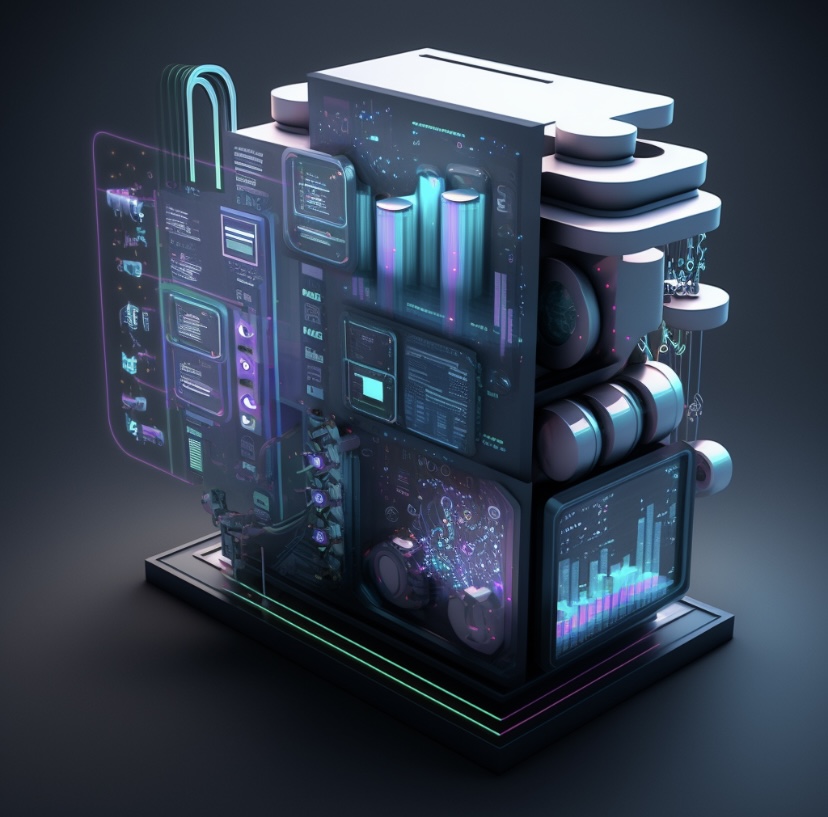
Energy
AI solutions can help energy companies optimize their operations, improve asset management, and reduce costs. Some examples of how AI can be used in the energy sector include:
- Energy management: AI systems can analyze sensor data from power plants and predict when maintenance will be needed, helping energy companies schedule maintenance at the most opportune time, reducing downtime and increasing efficiency.
- Asset management: AI systems can analyze sensor data from wind turbines and predict when components may need to be replaced, helping energy companies minimize downtime and increase the lifespan of their assets.
- Predictive Maintenance: AI can help energy companies to predict and prevent equipment failures by analyzing sensor data and predicting when maintenance will be needed.
- Demand forecasting: AI systems can analyze historical energy consumption data and weather forecasts to predict future energy demand, helping energy companies optimize production and distribution.
- Grid management: AI systems can monitor and control the flow of energy on the grid, helping energy companies to balance supply and demand and ensure a stable power supply.
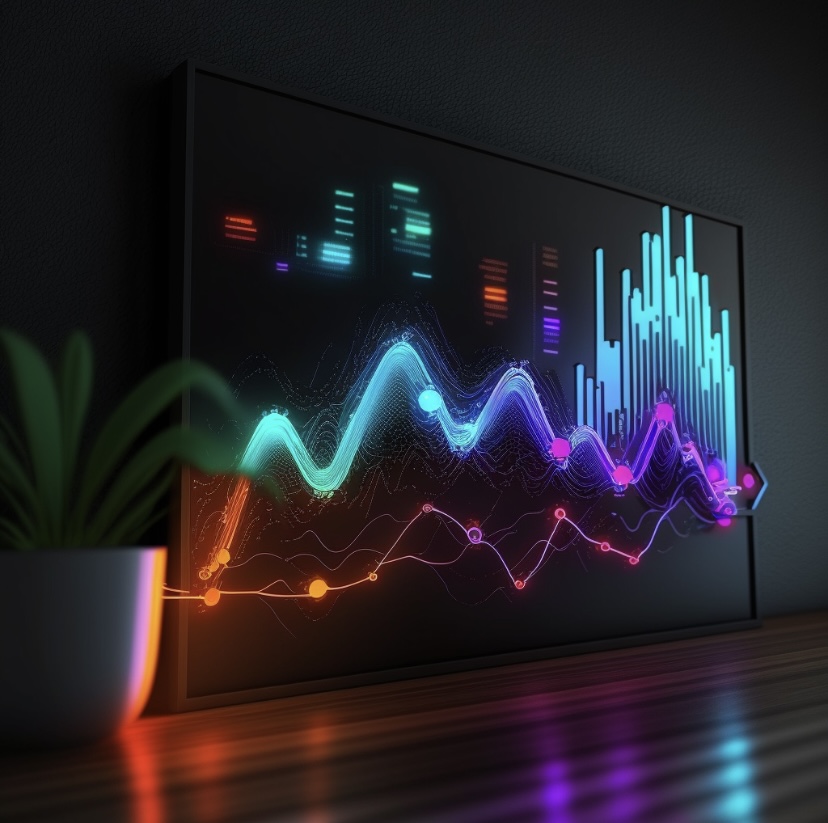
Government and Public Sector
AI solutions can also help government organizations improve their operations and better serve their citizens. Some examples of how AI can be used in the government sector include:
- Citizen services: AI chatbots and virtual assistants can help government organizations improve accessibility and reduce wait times for citizens by answering questions and providing information on government services 24/7.
- Public safety: AI predictive policing systems can analyze crime data to predict where and when crimes are likely to occur, helping law enforcement agencies proactively patrol high-risk areas and reduce crime rates.
- Budget allocation and financial management: AI-based systems can help government organizations make better decisions in allocating their budgets based on historical data and patterns of spending and revenue, and detect any fraudulent activity in financial transactions.
- Transportation and city planning: AI can help government organizations optimize traffic flow and reduce congestion by analyzing traffic data and predicting traffic patterns, and plan for the future by analyzing and predicting population growth and migration patterns.
- Social services: AI systems can help government organizations improve the delivery of social services such as welfare, unemployment benefits, and healthcare. By analyzing data from various government departments, AI can help identify people who are most in need of assistance and provide them with the resources they need.
- Predictive maintenance: AI systems can use machine learning algorithms to analyze sensor data from public infrastructure and predict when maintenance will be needed, helping public sector organizations schedule maintenance at the most opportune time, reducing downtime and increasing efficiency.
- Public services: AI chatbots and virtual assistants can help public sector organizations improve accessibility and reduce wait times for citizens by answering questions and providing information on government services 24/7.
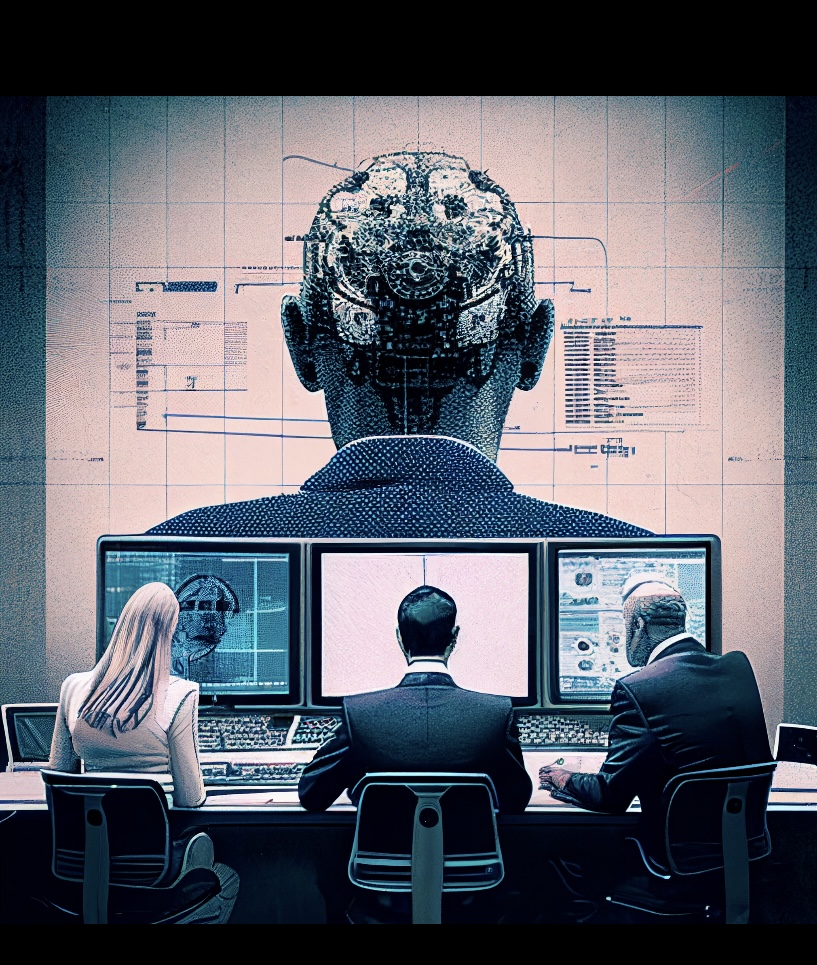
E-commerce
AI solutions can help e-commerce companies improve their customer experience, increase sales, and optimize their operations. Some examples of how AI can be used in the e-commerce sector include:
- Personalized product recommendations: AI systems can analyze customer browsing and purchase history to suggest relevant products that they may be interested in, increasing sales and improving customer engagement.
- Chatbots and virtual assistants: AI chatbots and virtual assistants can help e-commerce companies provide 24/7 customer support, answering questions, and providing information on products and shipping.
- Fraud detection: AI systems can analyze customer transactions and detect suspicious activity, helping e-commerce companies prevent fraud and reduce the risk of financial losses.
- Inventory management: AI systems can analyze sales data and predict future demand, helping e-commerce companies optimize their inventory and reduce costs by avoiding overstocking or stockouts.
- Personalized marketing: AI can help e-commerce companies to create personalized marketing campaigns and targeted promotions for specific segments of customers based on their browsing and purchase history, or even their demographics and interests.
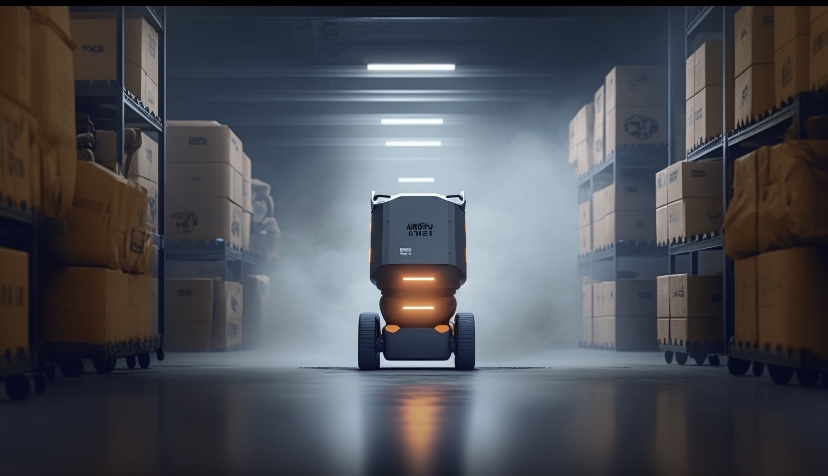
Power and Utilities
AI solutions can help power and utilities companies optimize their operations, improve asset management, and reduce costs. Some examples of how AI can be used in the power and utilities sector include:
- Power generation: AI systems can optimize the performance of power plants by analyzing sensor data and predicting when maintenance will be needed, helping power and utilities companies schedule maintenance at the most opportune time, reducing downtime and increasing efficiency.
- Grid management: AI systems can monitor and control the flow of energy on the grid, helping power and utilities companies to balance supply and demand and ensure a stable power supply.
- Predictive maintenance: AI systems can predict equipment failures by analyzing sensor data and predicting when maintenance will be needed, thus reducing downtime and increasing efficiency.
- Demand forecasting: AI systems can analyze historical energy consumption data and weather forecasts to predict future energy demand, helping power and utilities companies optimize production and distribution.
- Customer service: AI chatbots and virtual assistants can help power and utilities companies provide 24/7 customer support, answering questions and providing information on products and services.

Agriculture
AI solutions can help agriculture and farming organizations optimize their operations, increase efficiency and improve crop yields. Some examples of how AI can be used in the agriculture sector include:
- Precision agriculture: AI systems can analyze data from sensors and drones to provide farmers with detailed information on crop health, soil moisture, and weather conditions, helping them optimize planting, irrigation and fertilization.
- Crop monitoring: AI systems can analyze images taken by drones or cameras to detect crop stress, pests, and diseases, helping farmers take early action to prevent crop losses.
- Livestock monitoring: AI systems can monitor the health and wellbeing of livestock using sensors and cameras, helping farmers detect illness and injury early and reducing the risk of losses.
- Predictive analytics: AI systems can analyze data from various farming operations, such as weather data, crop yields and livestock performance, to predict potential issues before they occur, helping farmers to identify and resolve problems before they result in costly downtime.
- Supply Chain optimization: AI can help farmers to optimize logistics and movement of goods and materials in the supply chain, by predicting demand, identifying bottlenecks, and optimizing routes and schedules.
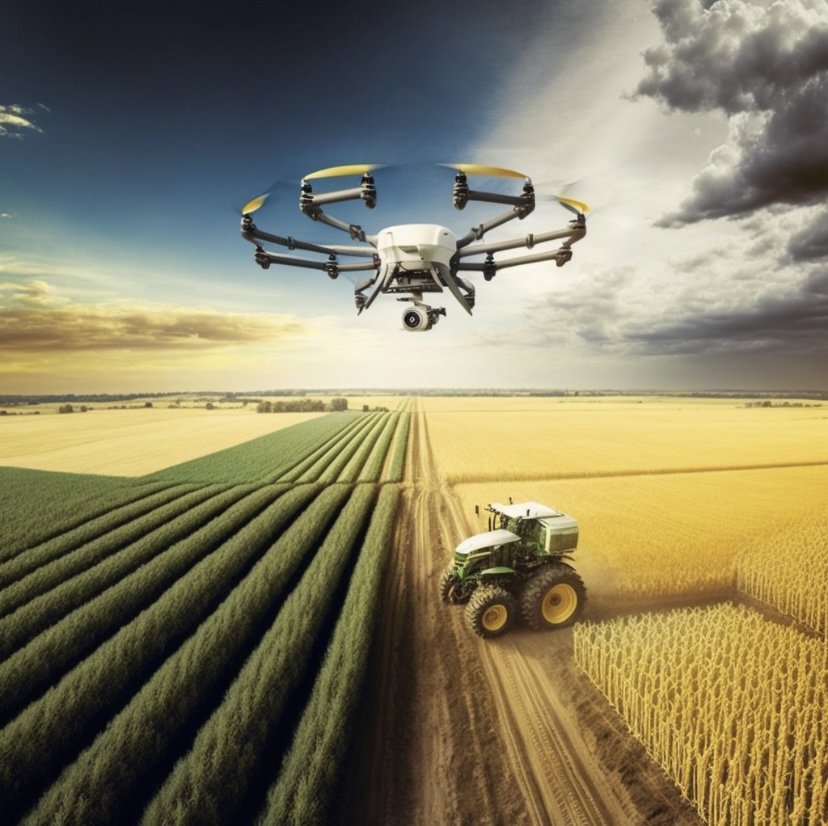
Healthcare
AI solutions can help healthcare organizations improve patient outcomes, increase efficiency, and reduce costs. Some examples of how AI can be used in the healthcare sector include:
- Diagnosis: AI systems can analyze medical images and patient data to assist with the diagnosis of diseases and conditions, helping doctors make more accurate and faster diagnoses.
- Patient monitoring: AI systems can monitor patients' vital signs, such as heart rate, blood pressure, and oxygen levels, and alert medical staff to potential issues, helping to prevent complications and improve patient outcomes.
- Clinical decision support: AI systems can analyze patient data, medical literature, and guidelines to provide doctors with evidence-based recommendations for treatment, helping to improve patient outcomes and reduce costs.
- Medical imaging: AI systems can analyze medical images such as CT scans, MRI and X-rays, to detect abnormalities and assist in diagnosis, helping to improve patient outcomes.
- Research: AI systems can analyze large amounts of medical data, such as electronic health records, to identify patterns and insights that can improve our understanding of diseases and lead to the development of new treatments.
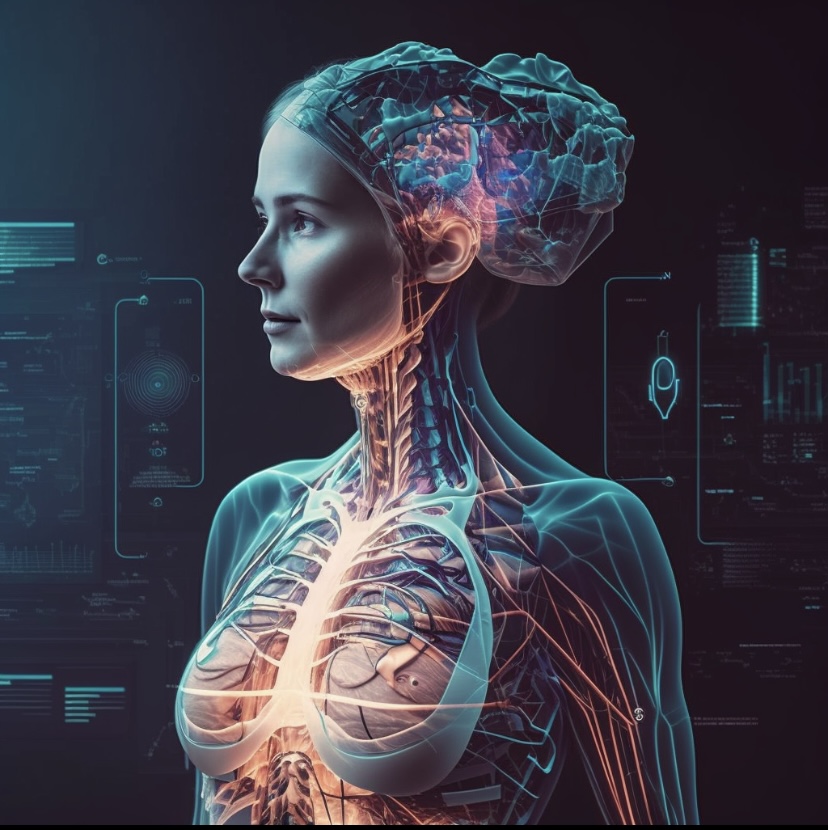
Contact Us
Ready to start your next project with us? That's great! Give us a call or send us an email and we will get back to you as soon as possible!
Website: www.aiqueen.ca
Email: info@aiqueen.ca
Call: +1-780-236-2121
